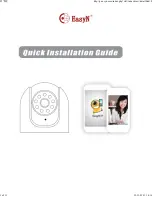
5
INR 21700 50 E
Cylindrical Lithium Ion Cell
7.7 TEMPERATURE CHARACTERISTICS
Cells shall be charged per stardard charge method and discharged per 7.2.3. Cells, full charged, shall be stored for 3
hours at the test temperature prior to discharging and then shall be discharged at the test temperature, when -20°C
discharge per 7.2.5. The capacity of a cell at each temperature shall be compared to the capacity achieved at 25°C and
the percentage shall be calculated. Each cell shall meet or exceed the requirements of Table
Table 2
-20°C
≥70%
-10°C
≥70%
0°C
≥80%
25°C
≥100%
45°C
≥95%
55°C
≥90%
8. SAFETY
8.1 EXTERNAL SHORT-CIRCUITING TEST AT 25°C
8.2 OVERCHARGE TEST
8.3 OVERDISCHARGE TEST
8.4 HEATING TEST
Cell, charged per stardard charge method, is to be short
circuited by connecting the positive (+) and negative (-) ter-
minals with a total external resistance of 80 mΩ ± 20mΩ.
Stop the test when the cell voltage falls below 0.1V and the
cell case temperature has returned to a value within 10°C
of the original testing temperature.
Criteria:
No Fire, No Explosion
Cell, charged per stardard charge method, is to be over-
charged with 1C to 6.3V while tapering the charge current.
Monitoring change of cell temperature during testing. Stop
the test when cell temperature decays to room tempera-
ture.
Criteria:
No Fire, No Explosion
Cell, charged per stardard charge method, is discharged at
constant current of 1C for 90min.
Criteria:
No Fire, No Explosion
Cell, charged per stardard charge method, is to be placed in
the hot oven.Store the testing cells connecting with ther-
mocouple in constant temperature box, heating the cells
and box(speed of ascending temperature is 5°C ± 2°C per
min) together at room temperature simultaneity, monitor
the temperature change of the box, keep for 30 minutes
after the box temperature reaches 130°C ± 2°C, then stop
the test.
Criteria: No Fire, No Explosion
TerraE Confidential Proprietary and not be reproduced without written permission from BMZ Germany GmbH, Zeche Gustav 1, 63791 Karlstein































